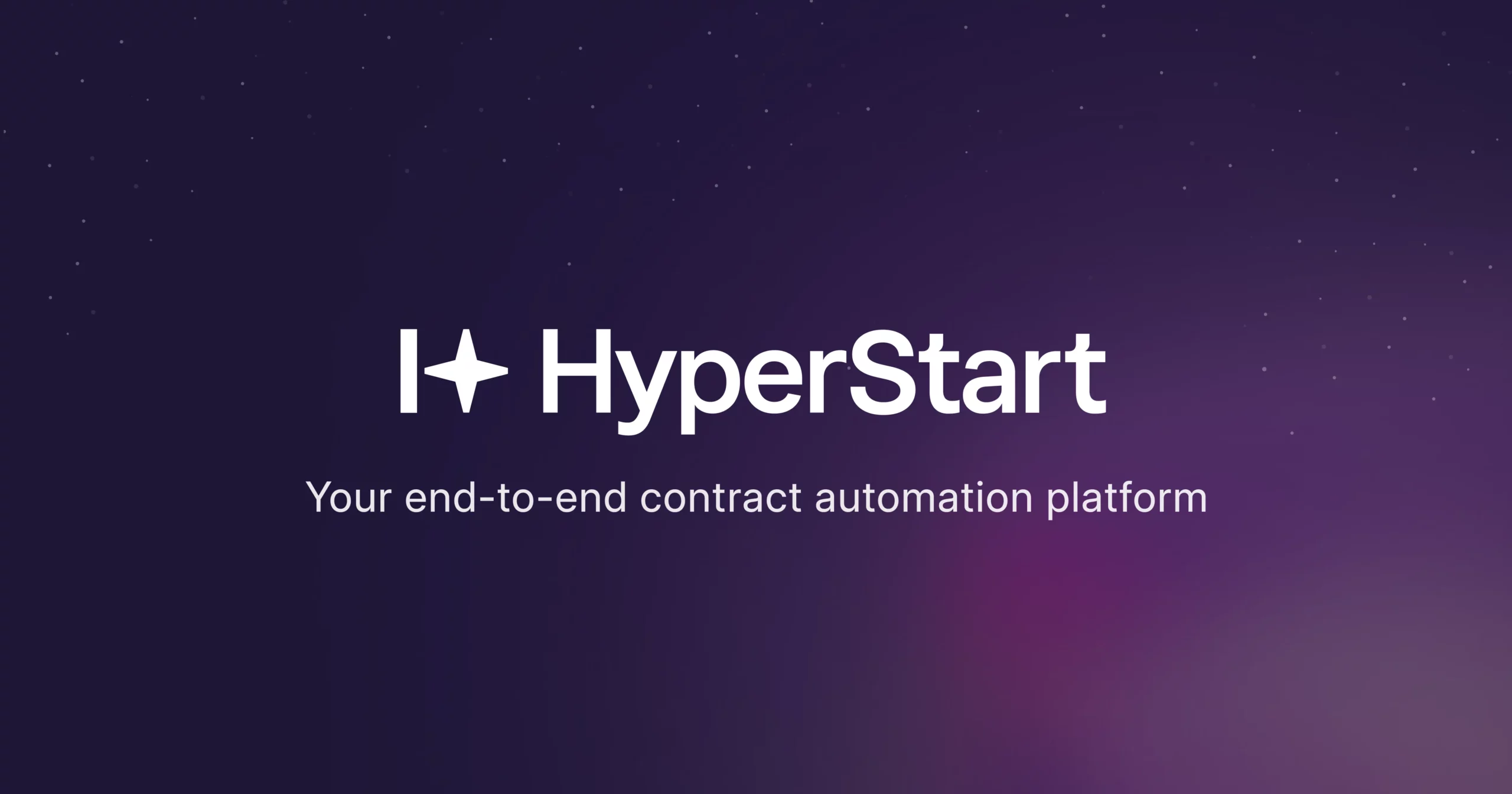In September 2024, according to Reuters, UK retail giant Tesco lost a legal battle after attempting to revoke employees’ “permanent” pay benefits. The court ruled that the word “permanent” meant exactly that.
Often, the root cause is poor contract drafting — vague terms, unclear deliverables, or overlooked clauses. When unresolved, disputes can rack up costly legal fees.
A Norton Rose Fulbright survey of top in-house counsel found that companies spend about $1.7 million on disputes for every $1 billion in annual revenue, highlighting how costly contract disagreements can become.
This guide will walk you through how to spot, prevent, and resolve contract disputes while protecting your business and preserving partnerships.
What is a contract dispute?
A contract dispute occurs when two or more parties disagree about the terms, obligations, or execution of a legally binding agreement.
This disagreement could stem from how a clause is interpreted, whether agreed-upon deliverables were met, or if one side believes the other has breached the contract. Such disputes can be minor, like a missed deadline, or major, like total non-performance or refusal to pay.
A contract dispute can escalate quickly, disrupting business continuity, damaging relationships, and leading to costly litigation if not resolved early.
Key characteristics of a contract dispute:
- Disagreement over terms: One party interprets a clause differently from the other.
- Non-performance: One side fails to fulfill its contractual obligations.
- Breach of contract: Either minor (non-material) or major (material), often with legal implications.
- Conflict over remedies: The parties may differ on how to “make it right.”
Now that we understand what a contract dispute is, let’s look at the common causes and how they can be resolved.
- Are self-aware and self-regulated.
- Anticipate stress instead of avoiding conflict.
- Frame conflict as a shared problem, with larger systemic friction points.
- Listen actively so each side feels understood before moving ahead.
- Encourage constructive conversation and diverse viewpoints.
Now that we understand what a contract dispute is, let’s look at the common causes and how they can be resolved.
What are the most common causes of contract disputes (and how do you resolve them)?
When contract disputes arise, understanding how to resolve them is crucial for reaching a mutually beneficial outcome. Here is a list of 6 reasons for contractual disputes and ways to resolve them.
1. Breach of contract
Cause: A breach occurs when one party fails to perform their contractual obligations. Material breaches fundamentally undermine the contract’s purpose (receiving the wrong equipment), while minor breaches don’t justify contract termination (delivery one day late). Payment-related breaches are the most common type, including late payments, partial payments, or non-payment for delivered goods or services.
Resolution: Start with an initial assessment and internal negotiation to reach a mutually beneficial solution – it’s quick, cost-effective, and preserves business relationships. If negotiation fails, use arbitration for binding decisions about damages and performance requirements.
2. Misunderstandings or misinterpretations
Cause: Contract language ambiguity creates disputes when terms like “industry standard quality” or “reasonable timeframe” aren’t clearly defined. This leads to vastly different interpretations of obligations, especially between parties from various industries or cultural backgrounds, where assumptions about common practices may not align.
Resolution: Use mediation with a neutral third party to clarify original intentions and find mutually acceptable meanings in a confidential, flexible environment. For technical disputes, expert determination provides binding clarification of industry-specific terms.
A frequent cause of disputes is unclear language within the contract. Ambiguities enable each party to interpret terms differently, resulting in disagreements over obligations and expectations.
3. Non-performance or failure to deliver
Cause: Non-performance occurs when a party doesn’t deliver promised goods or services – missed deadlines, incomplete deliverables, or substandard quality. These disputes escalate quickly because they directly impact business operations. Causes include resource constraints, technical difficulties, or external circumstances beyond the party’s control.
Resolution: Begin with internal negotiation to establish new timelines or alternative solutions. Use mediation and conciliation for creative solutions if relationships matter. Litigation in court may be necessary for severe contract dispute cases requiring legally enforceable performance orders.
4. Payment and financial disputes
Cause: Financial disagreements include disputes over pricing structures, billing discrepancies, change orders, and cost overruns. These are particularly contentious because they directly impact cash flow and profitability. Common scenarios include invoice accuracy disputes, undocumented additional work, or conflicts when market conditions change.
Resolution: Direct contract negotiation is highly effective for payment disputes through payment plans or settlements. Make use of arbitration clauses for binding financial decisions.
5. Disputes over contract scope or quality
Cause: Scope creep – work expanding beyond the original agreement, frequently occurs in service contracts and construction projects. Conflicts arise when one party believes additional work is covered while the other expects compensation. Quality disputes stem from subjective standards without clear, measurable criteria defined in the contract.
Resolution: Mediation and conciliation with a neutral third party allow parties to clarify expectations and find middle-ground solutions respectfully. Expert determination works best for technical quality disputes requiring industry expertise and provides binding decisions.
6. Poorly drafted or ambiguous contracts
Cause: Inadequate contract drafting often underlies multiple dispute types. Contracts that lack specificity, contain contradictory clauses, or fail to address common scenarios create uncertainty. Poor drafting includes vague terminology, missing essential terms, and unclear responsibilities that parties interpret in self-serving ways.
Resolution: Use mediation to renegotiate unclear terms in a flexible, confidential setting. Alternative Dispute Resolution (ADR) methods like early neutral evaluation or mini-trials can help efficiently resolve ambiguous contracts. Litigation may be needed for fundamentally flawed contracts requiring legally enforceable court decisions.
After exploring the causes and resolutions of contract disputes, let’s move on to the practical steps you can take to dispute a contract.
How to resolve a contract dispute (5 steps)
Successfully disputing a contract requires a systematic approach that balances legal rights with business relationship preservation. Here are 5 key steps to create a comprehensive contract dispute resolution strategy.
Step 1: Review the contract terms thoroughly
Begin by conducting a comprehensive review of all the terms of the contract, not just the disputed sections. Pay particular attention to dispute resolution clauses, governing law provisions, and any limitation of liability terms. Understanding the full scope of the agreement helps identify potential remedies and procedural requirements.
Document all relevant contract provisions, including definitions, performance standards, and timelines. This review should also identify any ambiguous language that might be contributing to the dispute and gather supporting documents or contract amendments referenced in the agreement.
Step 2: Identify the issue
Identify the specific nature of the dispute. Is it a material breach that goes to the heart of the contract, or a minor breach that doesn’t fundamentally undermine the agreement? Document the specific facts that support your position, including dates, communications, and any evidence of non-performance.
Distinguish between different types of contract disputes: performance failures, payment disputes, interpretation disagreements, or scope conflicts. Each type may require different resolution approaches and have different legal implications.
Step 3: Gather evidence and documentation
Collect all relevant evidence to support your position. This includes the original contract, any amendments or modifications, correspondence between the parties, delivery receipts, payment records, and any other documentation that demonstrates the breach or dispute.
Organize evidence chronologically and ensure it’s properly preserved. In today’s digital age, this includes emails, text messages, electronic documents, and any digital communications that relate to the dispute. Consider engaging forensic experts if the electronic evidence is complex or disputed. Accurate contract redlining during earlier negotiations can also serve as critical evidence in disputes.
Step 4: Seek legal counsel
While not every contract dispute requires litigation, consulting with qualified legal counsel early in the process provides valuable perspective on your rights, potential remedies, and the strength of your position. Legal experts can help evaluate whether you have a strong case and advise on the most appropriate resolution strategy.
Choose attorneys with specific experience in contract law and your industry. Their expertise can help you understand the nuances of your situation and avoid common pitfalls that could weaken your position or compromise your legal protection.
Step 5: Initiate a precise dispute resolution method
Start with direct communication to attempt resolution. Many disputes can be resolved through good-faith negotiation without formal proceedings. If direct negotiation fails, follow the dispute resolution procedures outlined in your contract, which may include negotiation, mediation, arbitration, or litigation. Here’s a glance at each.
| Method | Cost | Speed | Binding? | Best Use Case |
| Negotiation | Low | Fast | No | For minor misunderstandings |
| Mediation | Moderate | Moderate | Optional | To preserve relationships |
| Arbitration | High | Slower | Yes | For high-stakes, technical cases |
| Litigation | Very High | Long | Yes | For severe breaches or fraud |
Document all resolution attempts and their outcomes. This record demonstrates your good-faith efforts to resolve the dispute and may be required if formal proceedings become necessary.
A deal is a deal
Proactively identify risky clauses, prevent misinterpretations, and protect your interests. HyperStart AI gives you the clarity to act fast.
Book a DemoOnce you understand how to handle a contract dispute, it’s equally important to consider steps you can take to avoid these issues altogether.
How to prevent contract disputes before they arise
Prevention is always more cost-effective than resolution. Implementing comprehensive dispute prevention strategies protects your business interests while maintaining positive relationships with partners, vendors, and customers.
1. Draft clear, specific, and comprehensive contracts
Strong contracts begin with clarity. Every agreement should:
- Define key terms and performance expectations in unambiguous language
- Include detailed deliverables, quality benchmarks, and review/acceptance processes
- Specify timelines — including milestones, delivery dates, and deadlines
Avoid vague phrases like “reasonable efforts” or “industry standard” unless clearly defined within the contract. The more precise your language, the fewer assumptions either party can make.
2. Conduct regular contract reviews and updates
Conduct periodic reviews of your contracts to ensure they remain relevant and effective. Regular reviews help identify potential disputes before they become formal conflicts.
Establish a systematic process for contract review that includes input from legal, business, and operational stakeholders. This approach helps ensure all parties understand their obligations.
3. Include well-structured dispute resolution clauses
Your contract should lay out what happens if things go wrong. A solid dispute resolution clause can de-escalate tensions quickly. Include:
- A step-by-step process (e.g., negotiation → mediation → arbitration)
- Location/jurisdiction of legal resolution
- Defined timelines for initiating and responding to claims
Multi-tiered resolution mechanisms offer flexibility and preserve relationships while minimizing costs.
4. Ensuring proper communication and documentation protocols
Miscommunication is often the root of disputes. To avoid it:
Establish protocols for reporting performance, requesting changes, and raising concerns
Track key obligations like deliverables and payment terms in a shared system
Archive all contract-related communications — emails, change requests, meeting notes, approvals
This documentation trail provides clarity and protection in the event of a disagreement.
Stay ahead of contract risk
Identify dispute-prone clauses and get resolution-ready faster using HyperStart’s contextual AI suggestions.
Book a DemoAfter covering practical ways to prevent contract disputes, let’s see how contract management software can further help reduce these risks.
How contract management software helps reduce disputes
Modern contract lifecycle management (CLM) software addresses many of the root causes of contractual disputes by improving visibility, standardization, and compliance throughout the contract lifecycle.
1. Centralized repository with advanced access control
Contract management software provides a single contract storage repository, eliminating lost or misplaced agreements and ensuring every stakeholder accesses the correct version. All parties can access current versions and quickly locate relevant information when questions arise.
HyperStart’s platform offers advanced search capabilities across contract databases, allowing users to find specific contract clauses or agreements quickly. This is particularly valuable during dispute resolution when locating relevant precedents or contract language. Centralized storage also improves security through access control and version management.
2. Automated obligation and deadline tracking
CLM software automatically tracks key dates, obligations, and milestones. Automated alerts notify parties of upcoming deadlines and performance requirements, reducing missed deadlines that could lead to disputes.
Performance dashboards provide real-time visibility into contract compliance, helping identify potential issues before they escalate into disputes and allowing proactive problem-solving.
3. Robust version control and audit trails
Comprehensive audit trails track all contract changes, including who made modifications — a vital part of contract versioning that ensures traceability in legal reviews. This documentation provides clear evidence during dispute resolution and prevents confusion from parties working with different contract versions.
HyperStart’s platform ensures comprehensive tracking of contract modifications with detailed audit trails, providing organizations with complete transparency throughout the contract lifecycle management process.
Electronic signature integration ensures contract modifications are properly authorized and legally binding.
4. Standardized templates and clause libraries
CLM software includes libraries of pre-approved contract templates and clauses reviewed by legal experts. This standardization reduces problematic language that could lead to disputes and ensures consistent contract clarity.
Clause libraries provide alternative language for various scenarios, enabling customization while maintaining legal rigor and offering enhanced protection for all parties.
Resolve smarter, prevent better—with HyperStart
By now, you understand how contract disputes begin, ambiguous terms, missed obligations, shifting scopes, and how they can quickly spiral into costly, time-consuming issues.
But prevention and resolution aren’t just about legal tactics. They’re about visibility, control, and timing. That’s where HyperStart comes in.
With HyperStart CLM, you can:
- Spot risk-prone clauses before contracts go live
- Track obligations and deadlines in real time
- Maintain a clear audit trail of every change and conversation
- Resolve disputes faster with clause libraries and version history at your fingertips
Whether you’re resolving an active dispute or future-proofing your contracts, HyperStart helps you do it with confidence.
Book a demo to see how HyperStart gives legal, procurement, and ops teams the clarity they need to prevent contract breakdowns before they start.











